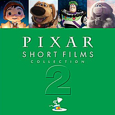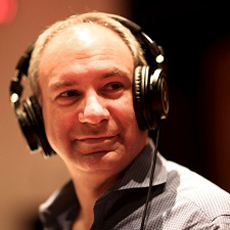It is said that the health of a studio can be measured through the creativity of its artists, and that these artists’ creativity can best fully express itself through the short film format. That couldn’t be more true than at Pixar Animation Studios, considering all the wonders created in that medium by those artists for over 20 years now. And, as John Lasseter recently said, it seems to be just the beginning!
Creativity and fun are the main the ingredients for entertaining animated shorts, elements shared by composer Michael Giacchino too, who has proven to have a certain talent for writing music for animated films (The Incredibles, Ratatouille) and for his experiments in music, especially his scores for the hit TV series Alias and Lost. A great friend of Pixar’s, he kindly accepted to make a little break in the composition of the Wachowski Brothers’ Speed Racer to talk with us about his happy participation in One Man Band (released along with Cars in 2006) and Lifted (released last year, along with Ratatouille).
Animated Views: How did you come to do the music for One Man Band ?
Michael Giacchino: I knew one of the directors, Andy Jimenez, who I had met through a friend of mine ten years ago. We met once and then he had kept in touch with me and knew what I was doing and then years later, when he got the chance to direct the film, he, for whatever reason, called me and asked if I would score it for him. So, I went and met with him and the other co-director, Mark Andrews. We all got along fantastically and it was just clear that it was gonna be a lot of fun. Ultimately though, the real reason why I did that score was that the short is so good.
AV: How did the production begin?
MG: When I came on board, it was still in its storyboard phase, very rough, because they couldn’t animate anything until the music was written, since all the characters are playing the music. It was really fun and different for me because, normally, I come in at the end, whereas this is something I had to come in very early on and be a part of kind of how the whole short ends up being constructed. We went back and forth many times and we tried different things and I would write music they would put into the storyboard. Then we looked at it if it worked. I’d go back and fix things that they didn’t like or that they had different ideas about. It was just a great collaborative effort to get it to where it is. And it was fun, too, because the different themes for the characters kept evolving. The two themes had to be able to play alongside each other and yet, still be very different. So, it was a very different process than what I had normally gone through on a film, but for that very reason, that’s why I think it was so much fun to do.
AV: How did you come to choose the musical style for each character?
MG: I remember one day we were sitting in a room at Pixar and I brought with me a bunch of different ideas of what instruments might go with certain characters and they had also a bunch of ideas of what instruments could go with each character. So, we sat down and started kind of moving the pictures from one side of the board to the other. There was a picture of each character on either side and we kept saying, “maybe this guy has a flute and a keyboard…”, and it became a process of figuring out which instruments not only worked together but also would be different enough from the other guy so that when one was playing, it wouldn’t sound like the other guy was playing, or when one would interrupt the other, it would be a definite interruption.
In the end, we came down to the conclusion that the tall, thin guy would be more elegant, a little bit more trebly in his instrumentation, there would be more higher frequency instruments, and then the bigger guy, the other guy would have a bass drum and became the guy that handles all the lower frequency stuff. So we had one guy that’s kind of snooty and refined and another guy who was a little bit more aggressive and forceful and just kind of a brute force. That guy became the low and the other guy became the high.
AV: Did your suggestions on the instrumentation influence the design of the musicians, since they are dressed up with instruments?
MG: They had rough ideas for certain things, you know. But it really set after that day when we sat down and decided, “ok, what instruments belong to each character?”, because that was what the animators needed to know in order to dress them up. Once that was kind of set, then they were able to go and finalize the design of each character. So, that was a very collaborative process, which made that project so different.
AV: Collaboration seems to be much closer in shorts. Do you like that?
MG: I love doing shorts because they are very experimental and you can try different things with a very small team of people. So, it’s much more collaborative than it does when you’re working on a giant film. There’s not a lot of people telling you what to do. Everyone is just trying to get it done. It’s a great venue for acceptance of new ideas. That’s why shorts are really a fun way to make movies. It’s really the reason why I do what I do, that kind of fun. I love that aspect of the process of filmmaking where it’s just about really being creative. They force you to do it, because you don’t the same amount of money that you would have on a big film, you have a much more limited resource and that what forces you to be the most creative you can be. That’s really fun! The most treasured jobs that I get are these smaller ones!
AV: Speaking of the experimental aspect of the shorts, we know that they nourish the artists before they go on to, or between, feature films. Is it the same with the music?
MG: Shorts are great for new animators, for new ideas, for new techniques. It’s a great way to test these things in an environment where there’s not an entire two-hour feature film at stake. It’s a safer environment to kind of do these experiments. They might figure out a new lighting technique they can apply in the next film, you know. They might figure out some sort of way to animate something better. Musically, I was able to try things that I would apply then in Ratatouille. I also did a short film for Disney, Goofy – How To Hook Up Your Home Theater. That was amazingly fun because I was able to go back in time. The idea was to make it sound just like those old Goofy shorts sounded. It was a way to go back and look at into the archives, look at the old scores, the original scores, all this material and really learn. You constantly want to learn, to get better in what you do, and every time you have access to material like this, you’re able to look at it and understand how they did that at that time. It was a kind of a musical archeology in a way! And the same for Lifted, that was a short about an alien, and I thought that was good chance to do something different sonically with the orchestra.
AV: How’s that?
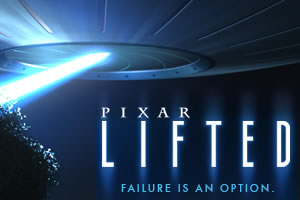 MG: What we did was we set up the orchestra in a circle. We put everything in a circle and we recorded it with the microphones completely in surround sound. So, you felt like the orchestra was completely surrounding you, and it was in the shape of the UFO. That was really fun to try that, to sit on the stage and listen to what that sounded like when we were recording it. Then, we were able to edit and do different things and layer the music in different weird ways. We had great fun creating something that really had never been done before! And out of that come ideas for other films that I’m working on.
MG: What we did was we set up the orchestra in a circle. We put everything in a circle and we recorded it with the microphones completely in surround sound. So, you felt like the orchestra was completely surrounding you, and it was in the shape of the UFO. That was really fun to try that, to sit on the stage and listen to what that sounded like when we were recording it. Then, we were able to edit and do different things and layer the music in different weird ways. We had great fun creating something that really had never been done before! And out of that come ideas for other films that I’m working on.
AV: Gary Rydstrom, the director of Lifted is a very famous sound designer. How did you collaborate with him, you two being artists both working in the field of sound?
MG: This guy is unbelievably amazing. He’s one of my heroes. All of what he did for film, including the roar of the T-Rex, are sounds that are iconic in the same way that what Ben Burtt did for Star Wars, you know. He has done the kind of work where you may not know what he did but when you hear it, you know he did that. So, you go in to a project like this with someone who has been working in sound all his life, and the thing I realized about Gary is that he has impeccable timing. His timing is amazing. So, the pacing of the short – every joke, every gag – works really nicely. And he has such a dry wit about him which translates so nicely in his filmmaking. He’s one of the most unique guys I’ve worked with.
AV: He’s got a very different way of using the score.
MG: It’s somehow interactive with the film in that it cuts off unnaturally depending of what’s happening in the film. The music is a little bit more traditional than in my other shorts. It has some modernism in it, but with some classical kind of feel, very different from the eclectic score I made for One Man Band. But underneath, we recorded it very differently, since it’s starting and stopping and starting and stopping again as the alien tries to get better at abducting humans. You know, when I’m picking projects to work on, I always try to pick things that either scare me or thing that I haven’ t done before in order to challenge myself. I don’t want to constantly do the same thing over and over. And shorts are perfect for that!
AV: Disney and Pixar announced they are preparing a lot more short films to come. Do you have any projects with them lined up?
MG: There are some things that I’ve heard and I talked some friends about them, but nothing is 100% sure right now. But I’m sure something will come up…
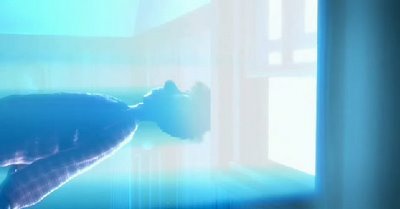
AV: Can you tell me a little about your score for Speed Racer that you’re working on?
MG: We’ll record sometime in February, which is not a lot of time to do a lot of music! But it’s great. I’ve been a fan of show since I was a kid. I even have a poster of Speed Racer in my office that has been here for years! So, for me it’s one of those jobs that’s just a lot of fun. And the fact that it’s not only fun but it’s also a great movie makes it even better!
is available to buy now from Amazon.com
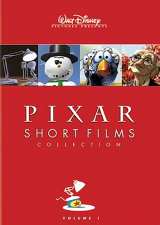
With very special thanks to Michael Giacchino and Andrea Datzman.
This article was originally published in French at Media Magic. It is reprinted here by exclusive arrangement and with express permission from its author, Jérémie Noyer. English version ©Animated News & Views.



